This article was first published in the May 2020 issue of Apollo; the Rothko Chapel is now scheduled to reopen on 26 September.
If you restore it, they will come. At least that is the working theory. After an extensive period of study and consultation, followed by more than a year of renovations, the Rothko Chapel in Houston, Texas was due to reopen this spring. The exact date is now uncertain, as the coronavirus has extended its reach from America’s coasts, squeezing the centre of the country in its grip. Even amid this crisis, however, the story of the Rothko Chapel, from its origins to its new restoration, deserves our attention. Indeed, it may well have something crucial to say in this unsettling moment, especially to the intersecting predicaments faced by the art world and religious communities, which are both experiencing seismic disruption.
First, we need some context. Mark Rothko accepted the chapel commission from the Franco-American philanthropists John and Dominique de Menil in 1964. Then in his early sixties, Rothko worked on the paintings for the chapel continuously for three years, even erecting them on scaffolding in a defunct gymnasium in New York City so that he could conjure the immersive experience he wanted to foster in the chapel. Rothko had first begun to toy with the idea of a complete painted environment in the late 1950s, when he created his Seagram murals for a posh restaurant in New York. After torturing himself with the idea of patrons noshing on opulent meals, with his works serving as little more than wallpaper, the artist abruptly withdrew them. He eventually gave a subset of these works to the Tate Gallery in England, with scrupulous instructions for their display in perpetuity in a room of their own. Following the disappointment of the Seagram saga, Rothko looked to his chapel paintings as an opportunity to realise his ambition of a Gesamtkunstwerk, a total environment defined by his paintings.
In addition to the unique artistic licence represented by the chapel commission, the project also promised an apotheosis for Rothko’s long-standing desire to evoke religious responses from his viewers. While the late-blooming artist had finally achieved unquestionable critical and financial success by the 1960s, he continued to feel that many viewers – especially in the art world – failed to grasp the true significance of his works, and the spiritual ambition behind them. A chance encounter with the writer Selden Rodman provides a telling example. While strolling through the Whitney Museum of American Art, Rodman ran into the painter and attempted to pay him a compliment, in the formalist idiom du jour. Rather than being pleased when Rodman praised him as ‘a master of color harmonies,’ Rothko took immediate umbrage. ‘The people who weep before my pictures are having the same religious experience I had when I painted them,’ he explained gruffly. ‘And if you, as you say, are moved only by their color relationships, then you miss the point!’
For all the adamance of Rothko’s reply, just what he meant by ‘religious experience’, and why he felt it was so crucial to an appreciation of his work, remains debatable. While the artist was raised in an Orthodox Jewish family, in a largely Jewish area of what is now eastern Latvia, he rejected Jewish observance as an adolescent, not long after the family emigrated to the United States. Nonetheless, his life in New York was inflected by Jewish culture at nearly every turn, especially in the artistic company he kept, including Adolph Gottlieb, Barnett Newman, and Louise Nevelson, and the curators and critics he dealt (and sparred) with, such as Clement Greenberg and Harold Rosenberg. And while he rejected being labelled a ‘Jewish artist’, he once advised the young sculptor George Segal that ‘studying Jewish history will give you the opportunity to deal with spiritual states’. In the chapel paintings, Rothko seemed to sense a backdoor into such ‘spiritual states’; a chance to probe feelings that he admitted – at least in private – had been shaped by Jewish experiences of trauma and transcendence. Working within the norms and expectations of a Christian space did not represent a rejection of his heritage so much as the freedom to engage religion on his own terms.
The chapel was intended to serve as the culminating monument at the end of the mall of the University of St Thomas, a Catholic institution administered by members of the Basilian order. While the chapel would eventually be dedicated as a non-denominational site, separate from the university, Rothko willingly accepted the doctrinal context of the chapel as it was initially conceived, even consenting at one point to indications of the 14 Stations of the Cross on the exterior of the chapel, mirroring the 14 canvases inside. Moreover, it was Rothko who lobbied heavily for the implementation of the octagonal plan of the chapel – with its precedent in both Italian baptistery and Russian Orthodox church design – instead of the initial square layout envisioned by the chapel’s first architect, Philip Johnson, with whom Rothko famously butted heads. In the installation scheme, Rothko explicitly chose to evoke Christian precedent for his viewers. On the north, east, and west walls of the chapel, Rothko organised his works into triptychs, encouraging the viewer to approach the works devotionally, as they would a traditional altarpiece. For the southern entrance wall, he devised a single panel composed of a black rectangle set in maroon, recalling the placement of Last Judgement scenes he had recently admired in churches while sightseeing in Italy.
At a time when religious observance in the United States was beginning to show significant signs of decline, with many predicting the disappearance of widespread church attendance, Rothko made a bold wager on the relevance of religious art, albeit in a new form. While Rothko eschewed representations of Christian subjects, he made a deliberate attempt to harness the conventions of religious viewing. He wanted the chapel paintings to be approached with the same fear and trembling that a Last Judgment can induce, or the same concentrated fervour with which one might approach a devotional triptych. Rather than rejecting the resources of Christianity, Rothko sought to invite viewers to approach his works with visual and spiritual expectations schooled by Christian tradition; a resource he did not see in Jewish tradition. Given the right conditions and associations, he hoped his works would spark significant spiritual encounters in the manner of the great religious masterpieces of the past.
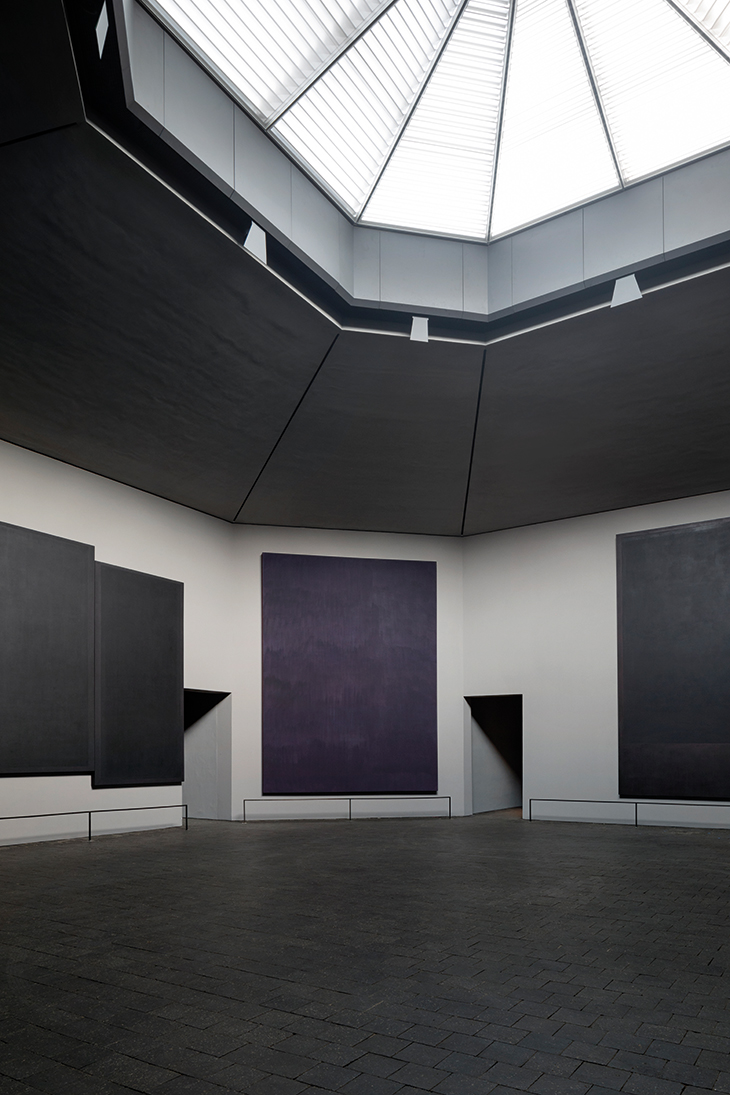
The Rothko Chapel, Houston (photographed in 2020 after restoration; opened in 1971). Photo: © Elizabeth Felicella
Struggling with his health, both physically and mentally, Rothko committed suicide in 1970, before the final installation of his paintings in Houston. By the time the chapel was dedicated the following year, its mission had already begun to expand, spurred on by the recognition of its patrons that they were now stewards for the legacy of one of the 20th century’s most important artists. ‘As he worked on the chapel, which was to be the greatest adventure of his life,’ Dominique de Menil reflected, Rothko’s ‘colors became darker and darker, as if he were bringing us to the threshold of transcendence, the mystery of the cosmos, the tragic mystery of our perishable condition.’ Rather than something to sweep under the rug, Rothko’s death began to be inscribed in the chapel’s origin story as a sacrifice for spiritual truth. To use the terms of Søren Kierkegaard in Fear and Trembling, one of Rothko’s favourite books in his later years, the artist was becoming, if not the Abrahamic ‘knight of faith’, a ‘knight of infinite resignation’. The De Menils’ acquisition of an edition of Barnett Newman’s Broken Obelisk (1963–67) – here dedicated to the memory of Martin Luther King, Jr., assassinated in 1968 – anchored this evolving sensibility at the site. Set in a reflecting pool outside the chapel, the massive steel sculpture suggested a parallel between individuals willing to commit their full being to realising their vision, be it moral (King) or aesthetic (Rothko). The Rothko Chapel was now a pilgrimage site, a cenotaph to self-knowledge, won by the artist’s willingness to probe the depths of human experience.
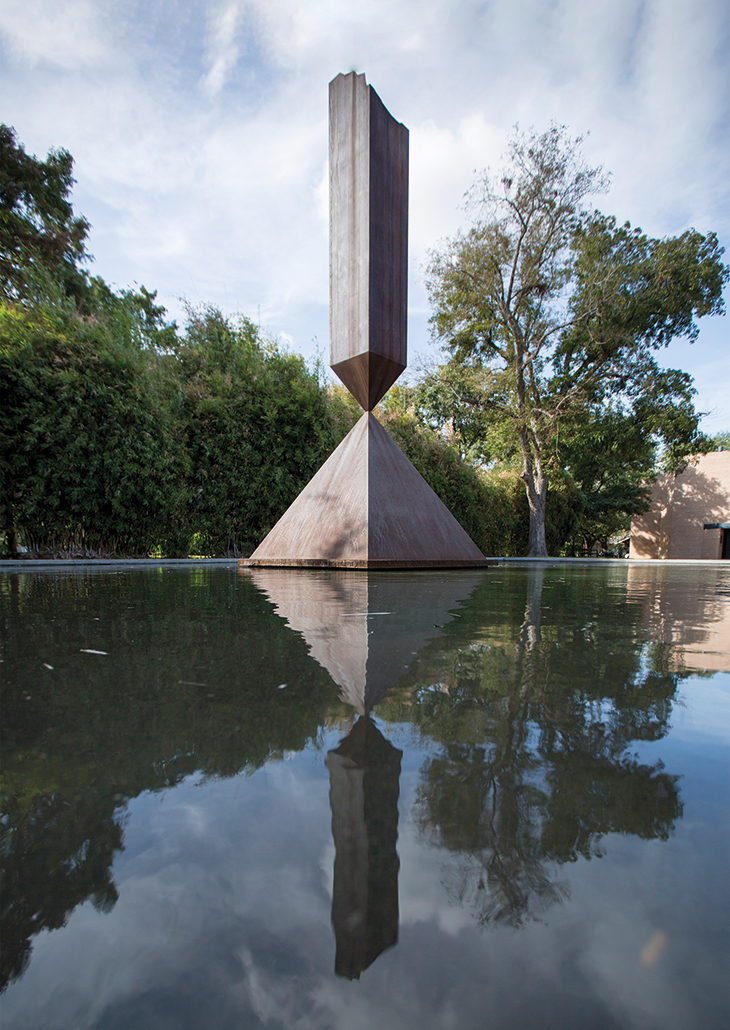
Broken Obelisk (1963–67), Barnett Newman (photo: pre-restoration). Photo: BEND Productions
In the ensuing decades, as the chapel fleshed out its organisation and developed its public programming, this mission evolved further, from a story of existentialist sacrifice to one of cultural leadership. A key development was the establishment of the Rothko Chapel Óscar Romero Award in recognition of ‘courageous, grassroots, human rights advocacy’, as evinced in the life of the Salvadoran archbishop, martyred in 1980 (and recently canonised by Pope Francis). With speeches and appearances by Desmond Tutu, the Dalai Lama, and Nelson Mandela through the ’80s and ’90s, the chapel became a beacon of religious pluralism; perhaps insufficiently intersectional by contemporary standards, but nonetheless pathbreaking at the time. Approached from this perspective, Rothko’s paintings – still a major draw in their own right – underwent a conceptual reframing. While the artist was reticent to proclaim his Jewishness publicly – preferring to stress broad, humanistic concerns – in the grammar of ’90s multiculturalism, Rothko’s identity could now be invoked as proof of the chapel’s egalitarianism. The chapel even assembled a collection of sacred texts, which were placed on benches to augment contemplation. One could now peruse a copy of the Tanakh while sitting in front of a Rothko triptych. Never mind that the artist would have preferred Dostoevsky. He was now well on his way – despite all his misgivings – to becoming a ‘Jewish artist’.
In the 21st century, the Rothko Chapel has found renewed art-historical importance, taking its place within an ever-expanding litany of sacred spaces conceived by modern masters. Not long after Rothko’s death, his friend Louise Nevelson – with whom he had enjoyed Chinese food and cigarettes while contemplating his chapel paintings in progress – received her own commission for an immersive chapel. In fact, the Nevelson Chapel at St Peter’s Lutheran Church in midtown Manhattan is itself undergoing a major renovation, and is due to be rededicated in 2021. Meanwhile, in the first decades of this century many contemporary artists have taken on major new religious commissions, from windows by Shirazeh Houshiary, Gerhard Richter, Sigmar Polke and David Hockney to a video polyptych by Bill Viola, sculptures by Anthony Caro and Antony Gormley, and paintings by Ettore Spalletti and Tobi Kahn.
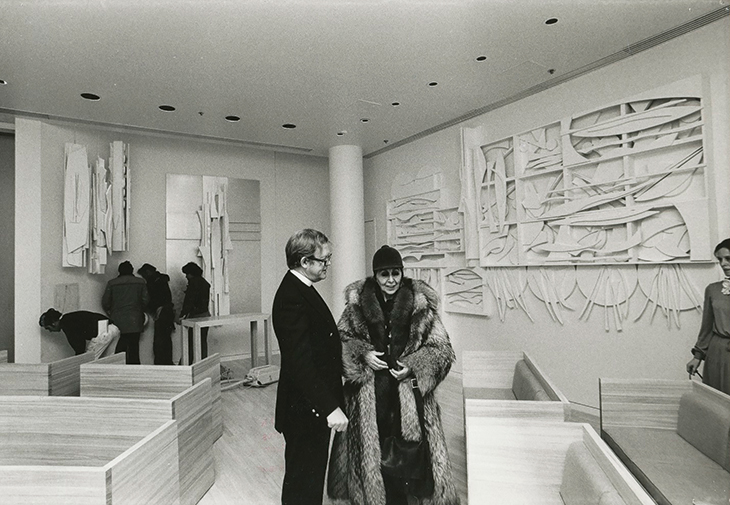
Louise Nevelson with Father Ralph Peterson during an installation of the Chapel of the Good Shepherd, St Peter’s Church, New York, designed by Nevelson and dedicated in 1977. Photo: courtesy Ralph Peterson
Intriguingly, central Texas has emerged as a veritable pilgrimage route for contemplative art spaces. From the Rothko Chapel, one can travel approximately 150 miles west to Austin, where the University of Texas is home to two works designed to capture the unflinching sun and steer it softly inwards. The Color Inside (2013), one of James Turrell’s signature ‘Skyspaces’, prolongs the pastel hues of sunrise and sunset that wash across its walls. Nearby stands Ellsworth Kelly’s posthumously completed Austin (2018), an ingeniously simple structure that manages to pronounce the Romanesque in a minimalist idiom. Windows punched out of its end walls in geometric patterns project patches of light across the floor, set off by stark black-and-white panels evoking the Stations of the Cross. True devotees of minimalism can travel another dusty 450 miles west to Marfa experience Donald Judd’s rows of bare concrete boxes, which seem to march out infinitely into the grasslands. In the context of these works, Rothko’s massive, crepuscular canvases loom over the history of modern sacred art like austere patriarchs, proudly – if somewhat judgmentally – regarding their progeny.
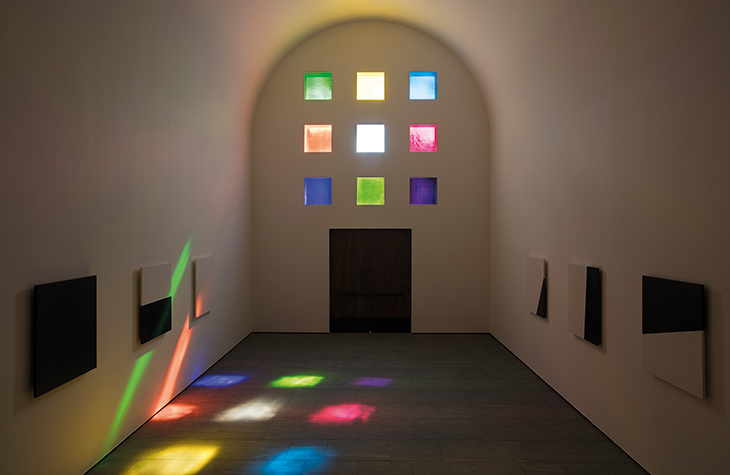
Austin (2018), Ellsworth Kelly; permanent installation at the Blanton Museum of Art, University of Texas at Austin. © Ellsworth Kelly Foundation
The renovation of the Rothko Chapel comes at a propitious time, cementing its status as a pilgrimage site for aesthetes and spiritual seekers alike. For the former, the creation of a new skylight and reconfiguration of its lighting scheme will not only bring the space closer to Rothko’s original vision but lend it a clearer, more even light than was possible originally. Perhaps more than any artist before him, Rothko was a stickler for lighting conditions, recognising that his unique, carefully calibrated colour combinations, and velvety surfaces composed of ultra-thin layers, could grow dull and inanimate in the wrong environment. Only with proper lighting – and indeed proper care for the works themselves, with their fragile bonding agents like rabbit-skin glue – do the paintings illuminate darkness, rather than dissolving into it. For those drawn, first and foremost, by the chapel’s interfaith and intercultural mission, the renovation and expansion of the institution’s campus will be a welcome improvement, allowing it to embrace its evolving role as a mecca for mutual understanding.
In the midst of a pandemic, with people around the world sheltering in place, the unveiling of an altneu space for reflection might not seem so significant. With life and health hanging in the balance for so many, it would be perverse to present paintings as some sort of panacea. Besides, America already has enough miracle cures being hocked by our snake oil salesman-in-chief. Instead, the Rothko Chapel waits patiently for a time when the crisis has subsided, like a biblical deluge, and we start looking again for places to contemplate what has transpired, and what kind of world we want to build. Not only will we crave open, peaceful places where we might come together (while remaining a safe distance apart); we will need spaces that are spiritually and aesthetically gracious enough to receive our diverging emotions – grief, anger, purposelessness – and refocus them like a prism.
For some, that might mean a bolstering of faith. For others, it could be more kenotic. In a recent, fascinating study of evangelicals, Philip Francis cites the case of ‘Jakob Z.’, who had a rapturous encounter in front of Rothko’s Seagram murals. Jakob Z. recounts: ‘There never would have been an undoing of my conservative Evangelical worldview without my encounter with the transcendent work of Mark Rothko on that rainy afternoon in London’s Tate Modern. I sat there for five hours and everything came undone.’ Perhaps future visitors to the Rothko Chapel will find its revitalised works offer a similar portal, from one, seemingly secure worldview to another. One more nebulous and indistinct at the edges, but also more embracing. After all, being born again into radical, life-altering doubt, like Jakob Z., might be just the kind of ‘religious experience’ Rothko had when he painted his canvases in the first place.
The Rothko Chapel will reopen to the public on 26 September. For more information, visit the Chapel’s website.
From the May 2020 issue of Apollo. Preview and subscribe here.
Unlimited access from just $16 every 3 months
Subscribe to get unlimited and exclusive access to the top art stories, interviews and exhibition reviews.

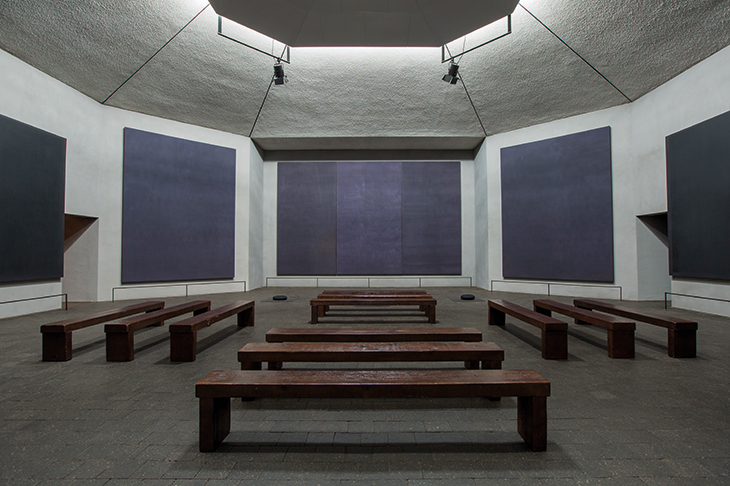
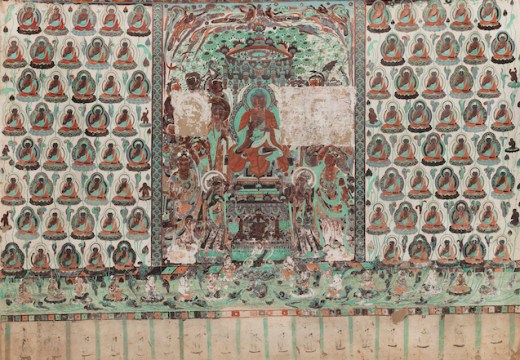
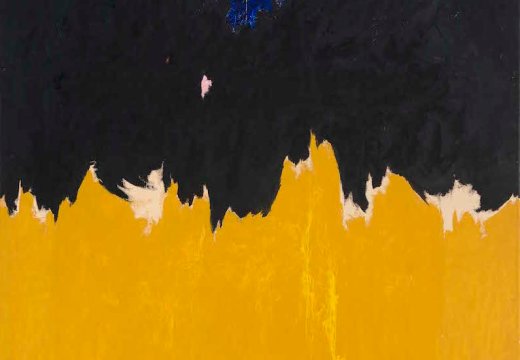
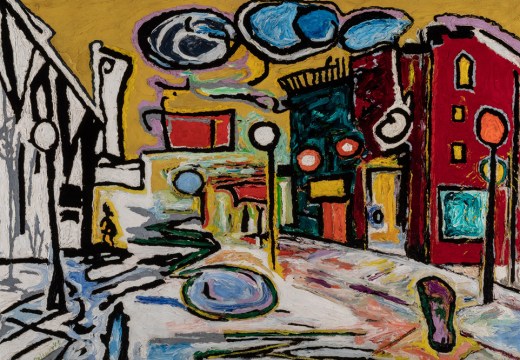









![Masterpiece [Re]discovery 2022. Photo: Ben Fisher Photography, courtesy of Masterpiece London](http://www.apollo-magazine.com/wp-content/uploads/2022/07/MPL2022_4263.jpg)
It’s time for the government of London to return to its rightful home